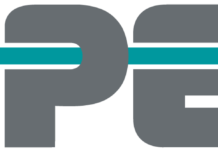In today’s marketplace, it is crucial for businesses to consider the needs and preferences of a range of audiences. To attract and retain a customer base, companies must create designs that are inclusive and cater to different backgrounds, abilities, and cultural nuances. One organization that stands out in its dedication to design is print on demand (POD). Through their approach and meticulous attention to detail, POD has become a pioneer in developing user-friendly products.
Understanding User Requirements
Print on demand firmly believes that successful design hinges on understanding the needs of its target audience. By conducting user research and usability testing, they gain insights into the preferences and requirements of individuals with different backgrounds. This understanding goes beyond considering factors like age, gender, or location; POD strives to embrace a perspective on diversity.
Embracing Viewpoints
Rather than relying on assumptions or stereotypes, on demand printing actively seeks out perspectives from individuals who come from diverse cultural backgrounds and have varied experiences. They recognize that incorporating these viewpoints leads to insightful solutions as they challenge conventional norms and biases.
This inclusive approach is evident right from the stages of product development at POD. They bring together teams consisting of designers from varied backgrounds who collaborate on all aspects of the project, starting from brainstorming ideas to execution. By creating an environment that values perspectives, this approach ensures that all potential users feel represented.
Principles of Accessible Design
Print on demand companies consistently strive to make their designs accessible to everyone regardless of any disabilities or limitations they may have. They adhere to established accessibility guidelines like Web Content Accessibility Guidelines (WCAG) and focus on the following principles:
Communication
POD emphasizes communication by using straightforward language and avoiding ambiguous terms or jargon whenever possible. This helps users with disabilities or those whose first language is not English understand the instructions and information provided.
Enhancing Visual Contrast
The visual elements are thoughtfully designed to ensure contrast and accommodate users with impairments. POD ensures contrast between text and background colors for readability across devices and lighting conditions.
Keyboard Navigation Support
POD prioritizes functionality that allows users to navigate their products using a keyboard. This feature is especially helpful for individuals who rely on technologies like screen readers or alternative input devices of a traditional mouse or touch-based gestures.
User Feedback Integration
Print on demand companies highly value the feedback they receive from their user base and incorporate it into their design iterations. They actively encourage users to share their experiences, suggestions, and pain points in order to enhance the user experience continuously.
By embracing user feedback, POD brings an innovative touch to its designs. Instead of relying on assumptions about customer needs and desires, they genuinely engage with users to address their concerns effectively.
Training and Education Initiatives
To promote inclusive design thinking globally, POD invests in training initiatives aimed at enhancing the skills of its teams and raising awareness within the design community.
They conduct workshops on design principles for employees, deliver presentations on inclusivity at conferences, and create articles/videos that educate others about the importance of designing for audiences. This concerted effort not only drives change within POD but also influences the entire industry.
Advocacy for Industry Collaboration
POD firmly believes that bringing about real change requires collaboration at an industry level. To achieve this goal, they actively engage with organizations, share knowledge through partnerships and joint projects, and conduct research studies in collaboration with institutions to shed light on accessibility in design practices on a broader scale.
Conclusion
POD has established itself as a leader in design by integrating principles and practices across its organization. They are setting a benchmark for developing products that effectively meet the needs of audiences. Their dedication to thoroughly understanding user requirements leads to solutions that are informed by real-world experiences. By advocating for accessibility in the industry, POD promotes design solutions that benefit everyone and embrace diversity.





